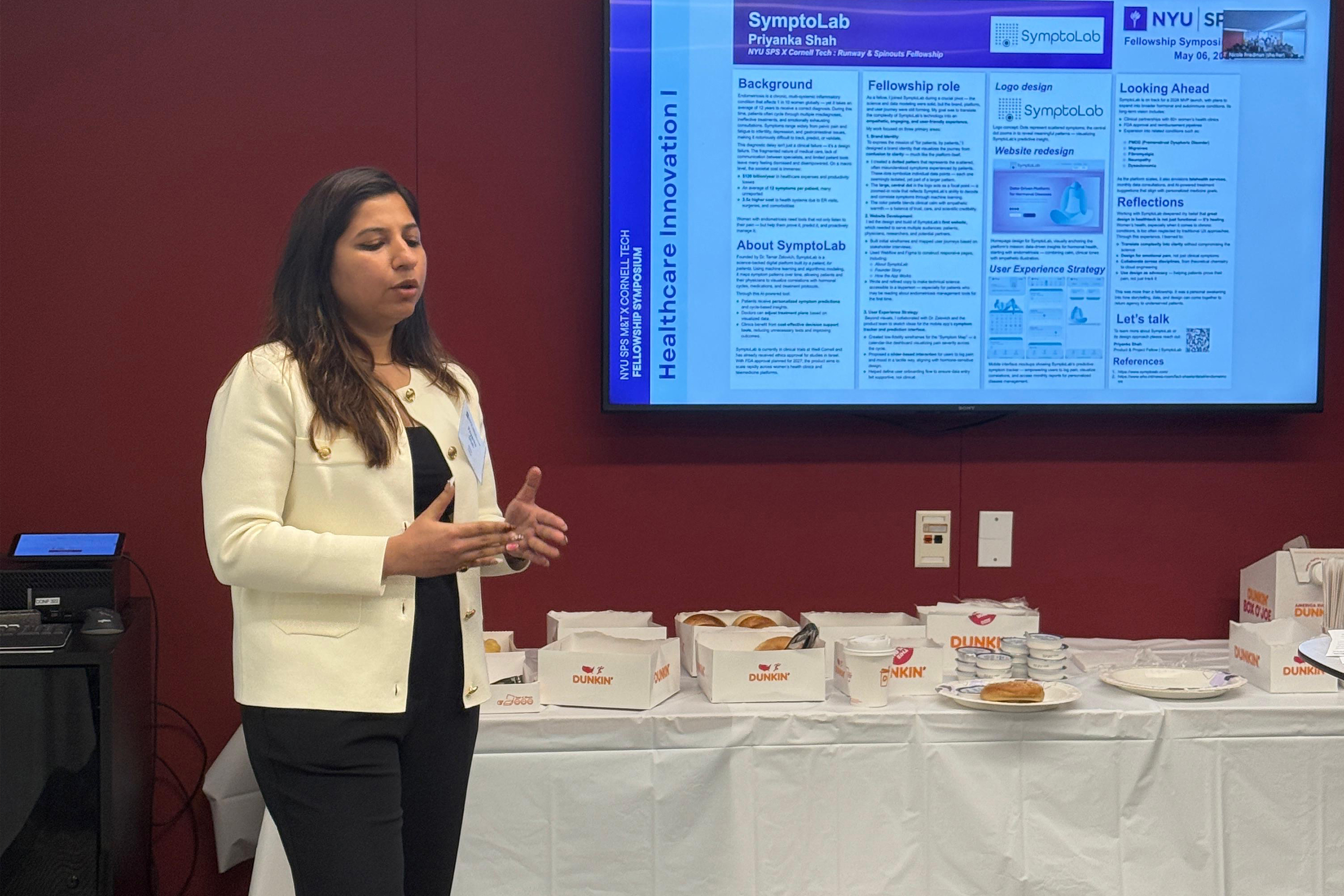Experiential learning
Designing with Purpose
A semester inside the Cornell Tech x NYU SPS M&T Fellowship

<p><span class="p-body">In the evolving landscape of health technology, innovation is not only defined by what is built, but how and for whom it is built. This past spring, through the Cornell Tech x NYU SPS M&T Fellowship, I had the opportunity to work at the intersection of design, strategy, and systems thinking. My placement with Symptolab, a digital health startup focused on chronic illness management and care, became more than a project; it became a lens into the complexities of building empathetic, data-informed tools for real people navigating real challenges.</span></p>
<p><span class="p-body">On my first day, I arrived at Cornell Tech’s Roosevelt Island campus—a space where architectural clarity meets technological ambition. I was introduced to Symptolab’s founder, Tamar Zelovich, whose personal journey with endometriosis shaped the company’s inception. Diagnosed only after two decades of misrecognition, she had built her own methodology to track and interpret symptom patterns—a system that eventually informed the platform’s structure. But Zelovich’s vision extends far beyond one condition. Symptolab is designed as a modular tool, with the potential to support a range of chronic and hormone-influenced conditions through customizable symptom modeling.</span></p>
<p><span class="p-body"> I collaborated with Zelovich to develop a strategic and visual language that reflected the platform’s intelligence while remaining accessible. The branding needed to serve multiple roles—to signal medical rigor, to convey personal agency, and to be emotionally resonant for users often fatigued by traditional clinical interactions. From wireframes to color palettes, logo iterations to typographic hierarchies, every design decision was a balance between clarity and care.</span></p>
<p><span class="p-body">Beyond design, I led project coordination across a distributed team, structuring agile workflows and facilitating collaboration between contributors based in New York and Israel. I managed weekly standups, development sprints, and documentation systems—translating abstract ideas into deliverables while ensuring alignment across time zones and disciplines. The experience sharpened my ability to lead cross-functional teams and operate as a translator between vision and execution.</span></p>
<p><span class="p-body">The semester culminated in our fellowship symposium, which brought together partners, faculty, and fellows for a day of presentations and dialogue. I led the planning and facilitation of the networking floor, including a poster session that highlighted the arc of each fellow’s work. When it came time to present mine, I walked attendees through Symptolab’s product evolution, our design strategy, and the philosophy of trust-building at the center of our user experience.</span></p>
<p><span class="p-body">Looking back, this fellowship became a living laboratory for applied innovation. It reminded me that building in early-stage environments requires not only technical tools and workflows, but also humility, dialogue, and the ability to hold ambiguity.</span></p>
<p><span class="p-body">As I continue on my path in product and project management, I carry forward the clarity, confidence, and collaborative muscle this fellowship helped me shape—and deep gratitude for the ecosystem that made it all possible.</span></p>
<p> </p>


